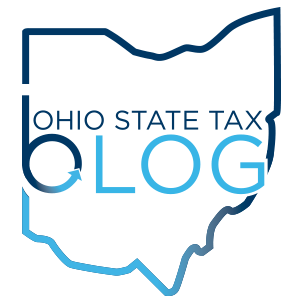Ohio Commercial Activity Tax: BTA cleans up CAT sourcing dispute by ruling sales shipped through an Ohio distribution center were sitused to ultimate delivery location after DC.
VVF Interest LLC (“VVF”), represented by Buckingham attorneys Rich Fry, Steve Dimengo and Nate Fulmer, notched a significant victory at the Ohio Board of Tax Appeals for the situsing of its sales for Ohio commercial activity tax purposes. VVF Intervest, LLC v. Harris, BTA Case No. 2019-1233 (Decision and Order, Sept. 13, 2023). Although the products manufactured and sold by VVF were routed through an Ohio distribution center, the Board held that this was not where the good were ultimately received by the purchaser (HRB). It was critical that the goods were only transported to Ohio for further shipment elsewhere. “[T]he ultimate delivery to HRB is not the Columbus distribution center. This destination ends just one leg of HRB’s transportation and continuous delivery process.” As a result, VVF’s sales were sitused to the ultimate delivery location after leaving the Ohio distribution center, resulting in nearly 97% of VVF’s sales at issue being sitused outside Ohio.
VVF, a Kansas-based manufacturer of personal care products, produced bar soap for nationwide brands according to the brand-owner’s specifications. Its primary customer at issue, HRB, used a third-party distribution center in Ohio to distribute the soap to the eastern U.S. HRB would arrange to pickup the products at VVF’s facility in Kansas and transport them to the Ohio DC for further shipment. Then, HRB would direct the products to be delivered to HRB’s customers, which were mostly large retailers.
The determination as to whether VVF’s sales were subject to Ohio CAT depended on the ability to provide sufficient evidence that the good were ultimately delivered to the purchase outside Ohio. R.C. 5751.033(E). In a similar case, the taxpayer failed to provide proof of the subsequent shipment of its goods to locations outside Ohio, only relying upon the purchaser’s acceptance of the goods at the taxpayer’s location in Georgia. However, VVF succeeded by presenting testimony from HRB and corroborating evidence that 96.84% of the products initially transported to the Ohio DC were ultimately delivered to locations outside Ohio. The Board commented that “Ohio does not become the ultimate delivery point simply because the bars are temporarily held here in the distribution center owned by an entirely unrelated third party… If the Commissioner is correct, all of those receipts should be sitused to Ohio simply because Ohio is the first stop. We find R.C. 5751.033(E) does not compel such a result.”
The Board also dismissed the Tax Commissioner’s contention that the taxpayer must know the ultimate delivery location at the time of the sale. “Neither the statute nor the case law have imposed a requirement of contemporaneous knowledge of the ultimate destination at the time of transportation.”
This significant decision is the first time the Ohio Board of Tax Appeals has relied upon evidence of subsequent transportation from an Ohio distribution center to situs sales outside the state. In a companion case, the Board ruled that the taxpayer, Jones Apparel Group / Nine West Holdings, failed to meets its burden of establishing the goods at issue were ultimately delivered outside Ohio. BTA Case No. 2020-53 (Decision and Order, Sept. 13, 2023). Both of these decisions have been appealed to the Ohio Supreme Court (VVF Intervest, LLC v. Harris, S. Ct. Case No. 2023-1296 and Jones Apparel Group / Nine West Holdings v. Harris, S. Ct. Case No. 2023-1288).
Please contact us if you have questions about how the VVF decision may impact your business’ Ohio gross receipts for CAT purposes. In this
